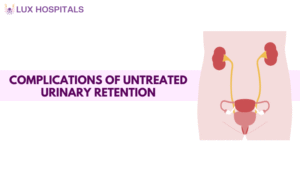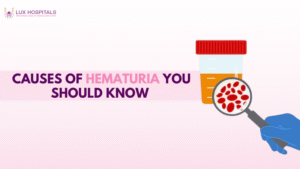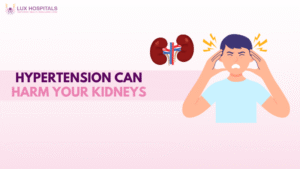Hydrocele in Children: Symptoms, Causes, and Effective Care Options

Hydrocele in children is a condition that can cause concern for many parents. While it is generally not a life-threatening issue, understanding its symptoms, causes, and care options is crucial for ensuring your child’s well-being. This blog will explore the details of hydrocele in children, including how it develops, the symptoms to watch for, and the best care options available. By the end, you’ll be equipped with the knowledge needed to take appropriate action if your child is diagnosed with this condition.
What is Hydrocele in Children?
A hydrocele in children is a fluid-filled sac surrounding a testicle that causes swelling in the scrotum. It is most common in newborns and typically resolves on its own without treatment. However, in some cases, hydroceles can persist or develop later in childhood, requiring medical attention. Understanding the nature of hydrocele in children can help parents make informed decisions about their child’s health.
Symptoms of Hydrocele in Children
Hydrocele in children is often characterized by visible swelling in the scrotum. The swelling is usually painless and may change in size throughout the day. In some cases, the swelling may be more noticeable after a child has been active or at the end of the day.
Common Symptoms:
- Scrotal Swelling: The most apparent symptom is a swollen, fluid-filled scrotum. The swelling can be on one or both sides and may fluctuate in size.
- Translucency: When a light is shone through the scrotum, the fluid inside the hydrocele may cause the scrotum to appear translucent. This is a common diagnostic feature.
- Painless Lump: The swelling is usually painless and soft to the touch. If your child complains of pain or tenderness, it may indicate an underlying issue, such as an infection or other scrotal condition.
- Irritability in Infants: Although rare, infants with hydrocele might become irritable due to discomfort, especially if the hydrocele becomes large.
Causes of Hydrocele in Children
Hydrocele in children can be caused by a variety of factors, primarily related to developmental issues during pregnancy or later in childhood.
Congenital Hydrocele:
Congenital hydrocele is the most common type seen in newborns. During fetal development, the testicles descend from the abdomen into the scrotum through a tube called the processus vaginalis. In some cases, this tube doesn’t close properly, allowing fluid to flow into the scrotum and cause a hydrocele. During the first year of life, this kind of hydrocele frequently goes away on its own.
Acquired Hydrocele:
Acquired hydrocele can develop in older children due to inflammation, injury, or infection. Conditions like epididymitis or orchitis can lead to fluid accumulation around the testicle, resulting in a hydrocele. Trauma to the scrotal area can also cause a hydrocele to develop.
Associated Factors:
- Premature Birth: Babies born prematurely have a higher risk of developing hydrocele because their processus vaginalis is more likely to remain open.
- Inguinal Hernia: Hydrocele is often associated with inguinal hernia, a condition where part of the intestine protrudes into the groin or scrotum. If your child has an inguinal hernia, they may also develop hydrocele.
Diagnosing Hydrocele in Children
If you notice symptoms of hydrocele in your child, it is important to consult a pediatrician or a pediatric urologist for a proper diagnosis. The diagnosis of hydrocele in children typically involves a physical examination and, in some cases, imaging tests.
Physical Examination:
During the physical examination, the doctor will inspect the scrotum for signs of swelling and fluid accumulation. The doctor may also perform a transillumination test by shining a light through the scrotum to determine if the swelling is due to fluid (hydrocele) or another condition, such as a hernia.
Ultrasound:
If the diagnosis is unclear or if the doctor suspects other underlying conditions, an ultrasound may be performed. This imaging test uses sound waves to create detailed images of the scrotum, helping to confirm the presence of hydrocele and rule out other issues.
Care Options for Hydrocele in Children
In many cases, hydrocele in children resolves on its own without the need for medical intervention. However, if the hydrocele persists beyond the first year of life or if it causes discomfort or other complications, treatment may be necessary.
Watchful Waiting:
For congenital hydroceles, especially in infants, doctors often recommend a watchful waiting approach. This means monitoring the condition over time to see if it resolves on its own. Regular check-ups are important to ensure that the hydrocele is not worsening or leading to other issues.
Surgical Intervention:
If the hydrocele does not resolve on its own or if it is causing problems, surgery may be recommended. The surgical procedure to repair hydrocele is called hydrocelectomy. During this procedure, the surgeon makes a small incision in the scrotum or groin, drains the fluid, and closes the processus vaginalis to prevent fluid from reaccumulating. Hydrocelectomy is typically an outpatient procedure, and most children recover quickly with minimal complications.
Managing Associated Conditions:
If the hydrocele is associated with an inguinal hernia or an infection, treating the underlying condition is crucial. In the case of a hernia, surgical repair may be necessary, and infections may require antibiotics. Addressing these issues can help resolve the hydrocele and prevent future complications.
Post-Surgery Care and Recovery
After surgery, most children can return to their normal activities within a week or two. Parents should follow the doctor’s post-operative care instructions carefully to ensure a smooth recovery.
Key Post-Surgery Care Tips:
- Rest and Recovery: Encourage your child to rest and avoid strenuous activities until they are fully healed.
- Pain Management: The doctor may prescribe pain relief medication to manage any discomfort after surgery. Follow the dosage instructions carefully.
- Follow-Up Appointments: Attend all scheduled follow-up appointments to ensure the hydrocele has been successfully treated and to monitor your child’s recovery.
When to Seek Immediate Medical Attention
While hydrocele is generally not a serious condition, there are certain signs that require immediate medical attention.
Red Flags:
- Severe Pain: If your child experiences severe scrotal pain, it could indicate a more serious condition, such as testicular torsion, which requires urgent medical care.
- Fever and Redness: If the scrotum becomes red, warm, and painful, it may indicate an infection, and you should contact your child’s doctor immediately.
- Persistent Swelling: If the swelling persists or worsens after surgery, it is important to consult the doctor to rule out complications.
Conclusion
Hydrocele in children is a common condition that, in most cases, resolves on its own without treatment. However, understanding the symptoms, causes, and care options is essential for parents to ensure their child’s health and well-being. By staying informed and seeking appropriate medical care when necessary, you can help your child overcome hydrocele with minimal disruption to their daily life.
At Lux Hospitals in Hyderabad, our team of pediatric specialists is dedicated to providing compassionate and effective care for children with hydrocele and other urological conditions. If you have any concerns about your child’s health, don’t hesitate to reach out to us for expert advice and treatment options.
Frequently Asked Questions
Most children recover from hydrocele surgery within a week or two, with minimal complications. Post-operative care is important for a smooth recovery.
Hydrocele in children typically does not cause infertility. However, if associated with other conditions like inguinal hernia, it may need evaluation.
Untreated hydrocele in children generally poses low risk but can lead to discomfort or complications if associated with other conditions. Regular monitoring is recommended.




















